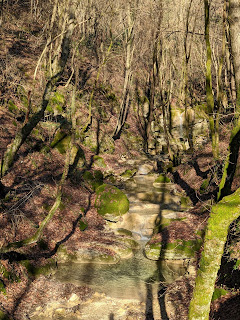previous lesson | this lesson | next lesson
Today's Street Sign Language Lesson ™ is about the fried dough treats we call "angel wings" in English. Soon after Epiphany passes (in Italy a significant holiday), these fried dough treats start appearing stores and bakeries.
Angel wings are fried dough (flour, water, egg, butter), shaped into twisted ribbons or flat strips that are deep-fried or baked, and served sprinkled with powdered sugar. Angel wings are eaten before Lent. The name "angel wings" can be assumed to refer to the lightness of these fried treats?
In Italy, there are many different regional names for angel wings, loosely based on two naming themes in my opinion. Theme one is what they look like, e.g., rags (stracci or cencio), gloves (guanti), bow or ribbon (galano) or lettuce (lattughe). Theme two perhaps refers to carnival or perhaps to that the fact that the final treats are not as heavy as they look? Names in this theme are chitchat (chiacchiere), lies (bugie), and gossip (pettegolezzi).
The company featured in many of these photos is Gecchele and they are based in Treviso. What the company has done is taken a few of the many region names – see here for more – and paired them with and characters from the commedia dell'arte.
Full disclosure: we did not buy any of the packaged examples. Why would we when they are so easy available, reasonably priced and fresh from a local bakery? The photo at the top of this post was taken at the bakery Forno Fassi (Città Alta). In Bergamo, we usually see the word chiacchiere used the most.
The types of chiacchiere you can find in stores is more that what is shown here. This is just a sample from one day we went shopping at PAM.
Bugie di Brighella
Bugia (pl. bugie) is a lie or a candlestick holder. Brighella is a masked character from the Italian theater style of commedia dell'arte. As we see on the packaging, Brighella typically wears a white smock. His character the Harlequin's smarter and vindictive older brother.
The term bugie is typical of Piemonte, Liguria.
Chiacchere di Balanzone
Chiacchiera (pl. chiacchiere) means a regional Italian sweet, but also means chit-chat or gossip. The associated verb is chiacchierare. Balanzone is another commedia dell'arte stock character. He is the old man, acting as an obstacle to young lovers. As seen on the packaging, Balanzone is usually pictured as a robust man.
The term chiacchiere is used all over Italy, but mostly from the middle to the south.
It is odd that the packaging (and the web site – no typo it seems) uses "chiacchere" without the second letter I.
Burlette di Gianduia
Burletta (pl. burlette) is a little joke. Gianduia (or Gianduja) "is one of the masks of the Italian commedia dell'arte, typically representing the town of Turin". Gianduja is also the name of the famous chocolate spread, such as nutella, invented in Turin at the beginning of the 18th century. Gianduia, the character, is an honest peasant with an penchant for wine, good food, and beautiful woman.
Pettegolezzi di Colombina
Pettegolezzo (pl. pettegolezzi) is gossip. Colombina – "little dove" is a stock character in the Commedia dell'arte. She is a tricky servant.
Galani dei Dogi
The term galàni is used in the area between Venice, Padua and Verona. Galano is a decorative bow or ribbon. A doge (pl. dogi) where elected heads of some Italian city-states during the medieval and renaissance periods. The word doge is closely associated with Venice, and in fact on the packaging of this product there is the unmistakable Campanile di San Marco in Venice.
I Quadri di Arlecchino
Arelecchino is a famous masked Bergamasco character in the commedia dell'arte. In English, we call him Harlequin and he is the comical servant dressed in a bold checkered (a quadri) outfit.
Mascherina Trevisan
Mascherina means a face mask, which could be a face mask we are using currently during the pandemic, or an eye or half mask used as part of a costume such as used during carnival. Trevisan is just the name of the company producing these angel wings.
Lattughelle
Lattuga means lettuce. Lattughella (pl. lattughelle) is either the salad green lamb's lettuce or mâche (Valerianella locusta), known for its nutty, mild flavor. It's commonly found in Bergamo as a salad green. The guess here is that the shape of the fried dough resembles lettuce leaves.
Coriandoli Fritti
Corandiolo is confetti or little chads. Fried (fritti) confetti just doesn't have a nice ring to it, does it?

















![[Liliaceae] Ruscus aculeatus. Common name: Butcher's broom. In Italian: pungitopo. [Liliaceae] Ruscus aculeatus. Common name: Butcher's broom. In Italian: pungitopo.](https://blogger.googleusercontent.com/img/b/R29vZ2xl/AVvXsEiK1Y5-gX0KiQWCodjtyecozLyJ6X18HTUnbm2GMPAXf8olENi-UxvVUAskw7rTZn350siH6o_wi9KMx5Pu-M7qmrkgL-uBsASTEQsxfBsjx7Q42MXmlTYMvzRxkrqxbHPMBwm3F7C3kC4/s320/%255BLiliaceae%255D+Ruscus+aculeatus+1.jpg)
![[Liliaceae] Ruscus aculeatus. Common name: Butcher's broom. In Italian: pungitopo. [Liliaceae] Ruscus aculeatus. Common name: Butcher's broom. In Italian: pungitopo.](https://blogger.googleusercontent.com/img/b/R29vZ2xl/AVvXsEj1Q23OSosPJ5AwyH7_O25b53sFf3ayh4k4-4haJiW8w-v8qp9uUgctrvMk-5TpdJzyHKV9ioDZlnN-PxylZ0UDB9-JlCjHch5uFBa-I-SXn6VFImS0btjm94X0302j7MV53uNMERBYxAc/s320/%255BLiliaceae%255D+Ruscus+aculeatus+2.jpg)
![[Ranunculaceae] Hepatica nobilis. Common name: Liverwort or Common Hepatica. [Ranunculaceae] Hepatica nobilis. Common name: Liverwort or Common Hepatica.](https://blogger.googleusercontent.com/img/b/R29vZ2xl/AVvXsEi07yqWJtWmLWhtoiw_qwL5vkNCWLzIDteQu4sQng_fIaMB7b4l26_t3wpmIDW-hR4WvAr28YYrsuiaXZ7lnjW-6pb7_VoiXI4SYVCZYYJgCgYJVmCKdvUwn0q1xCqV11exd7I0tCT5OVg/s320/%255BRanunculaceae%255D+Hepatica+nobilis.jpg)
![[Ranunculaceae] Helleborus niger - Christmas rose. [Ranunculaceae] Helleborus niger - Christmas rose.](https://blogger.googleusercontent.com/img/b/R29vZ2xl/AVvXsEiUPOzU42fPHqCntlFrIe5vg9Az8ATvpc66-dhPkpO6sUrqlw3pbrQd4YfnlY3s-yy35tHcVO8_B26-kMrNCW4DasQ2ZahHFVH6r72zoy7TnAhwmjnbPhM6YWDTC9tkxIXDkdCLgsi17hg/s320/%255BRanunculaceae%255D+Helleborus+niger+1.jpg)
![[Ranunculaceae] Helleborus niger - Christmas rose. [Ranunculaceae] Helleborus niger - Christmas rose.](https://blogger.googleusercontent.com/img/b/R29vZ2xl/AVvXsEjF-A8spEvZxnSds-KreYTswjVEfyByZzg9CwntYvmx03uNdIMPMi43VCnPbFAGH9e8CPVQvZXyPAhDdDvgAOnZt4z7sbeQzom717GlGv3ym-y_4QLmfUqlhcdQQxCwJm8dc-O9lu4gASI/s280/%255BRanunculaceae%255D+Helleborus+niger+2.jpg)